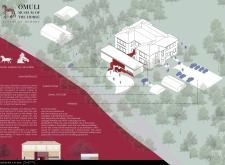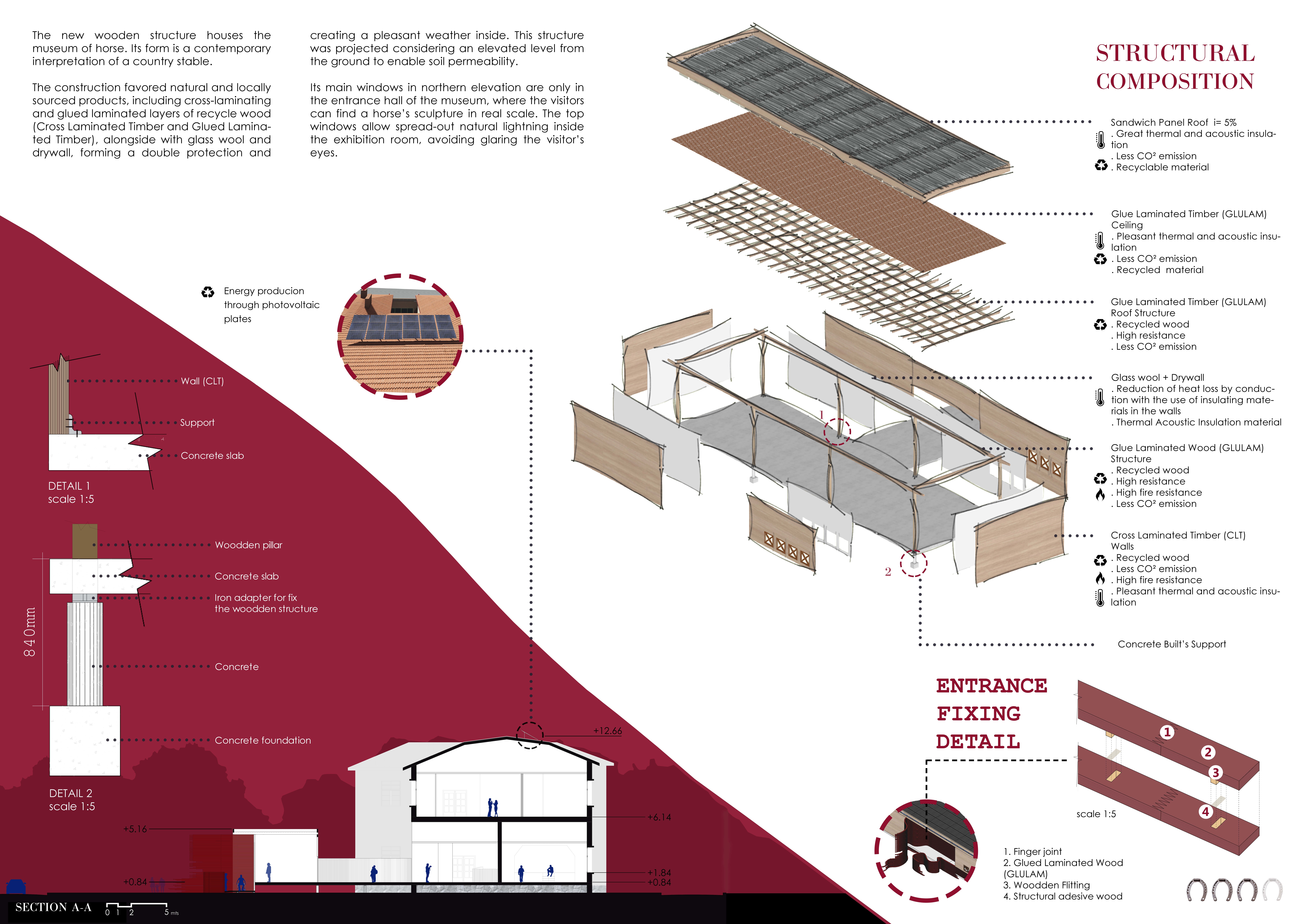5 key facts about this project
The Omuli Museum of the Horse is a contemporary architectural project designed to celebrate and preserve equestrian culture. Located in a tranquil landscape, the museum serves multiple functions, including exhibitions, education, and community engagement. The design integrates historical references with modern architectural principles, creating a space that reflects the significance of horses in human history while ensuring accessibility and sustainability.
### Design Approach and Functionality
The design of the museum is defined by its flowing form, which embodies the grace of horses in motion. This organic shape promotes movement and circulation throughout the interior spaces. It features a variety of zones, including exhibition areas, workshops, and visitor amenities. The main entrance showcases a welcoming façade with distinctive red accents, inviting visitors into a thoughtfully arranged layout that encourages exploration.
A notable aspect of the project is the connection to an existing historic house, which has been seamlessly integrated into the design. This extension preserves the cultural context and adds depth to the overall visitor experience. The inclusion of interactive workshops for visitors highlights the museum's educational dimension, allowing guests to engage actively with their surroundings while learning about equestrian practices.
### Innovative Materiality and Sustainability
The material choices in this project reflect a commitment to sustainability and environmental responsibility. Cross Laminated Timber (CLT) and Glued Laminated Timber (GLULAM) are predominant materials used for structural components, providing both strength and an inviting aesthetic. These materials have been sourced locally, minimizing the carbon footprint of construction.
In addition, the museum incorporates Glass Wool for thermal and acoustic insulation, contributing to the overall energy efficiency of the structure. Photovoltaic plates are installed to harness solar energy, reinforcing the sustainability objectives of the project. These design elements not only enhance the operational efficiency of the museum but also serve as an educational point for visitors regarding sustainable architectural practices.
### Integration with Landscape and Community
The site design thoughtfully engages with the surrounding landscape, promoting a natural flow between the built environment and nature. Landscaping features have been designed to enhance accessibility, offering designated parking areas and pathways that guide visitors through an interactive outdoor experience.
The museum also emphasizes its role as a community hub. Spaces for gatherings, educational programs, and artistic workshops encourage involvement from local residents, fostering a sense of ownership and appreciation for equestrian heritage. The museum aims to be a center for cultural exchange, where arts and crafts related to horses can flourish alongside traditional exhibition practices.
For those interested in detailed aspects of the Omuli Museum of the Horse, including architectural plans, sections, and design ideas, a comprehensive presentation of the project is available for further exploration. This provides insight into the innovative approaches taken in this architectural endeavor, illustrating how the project not only serves its function but also enriches the surrounding community and environment.





















































